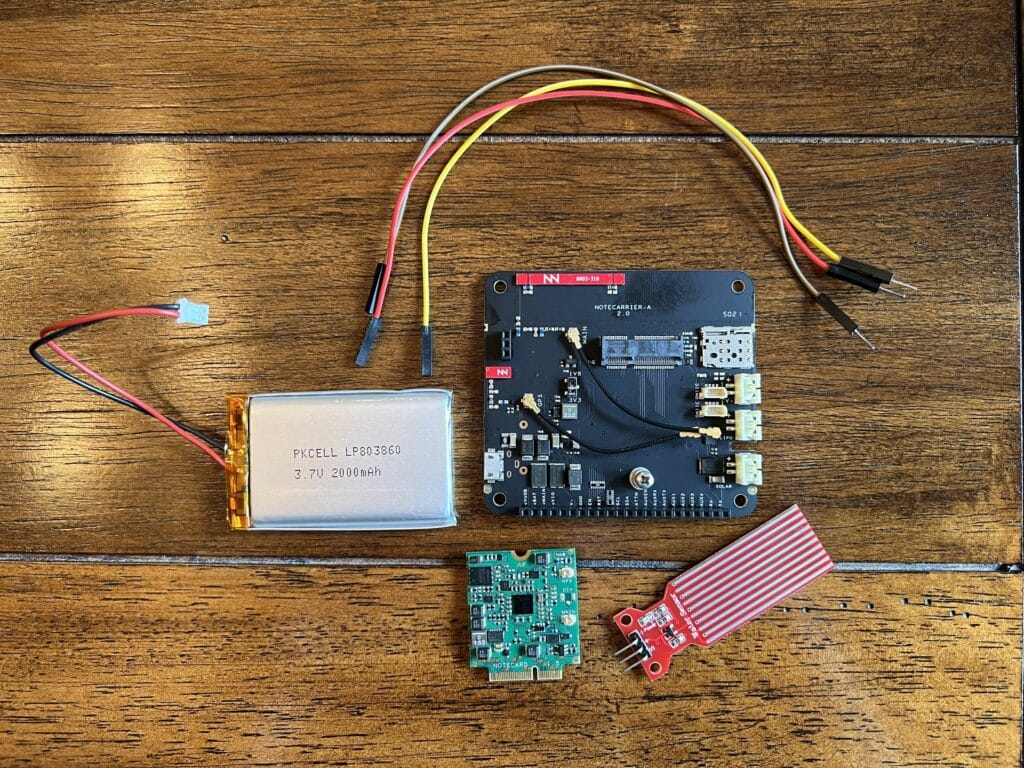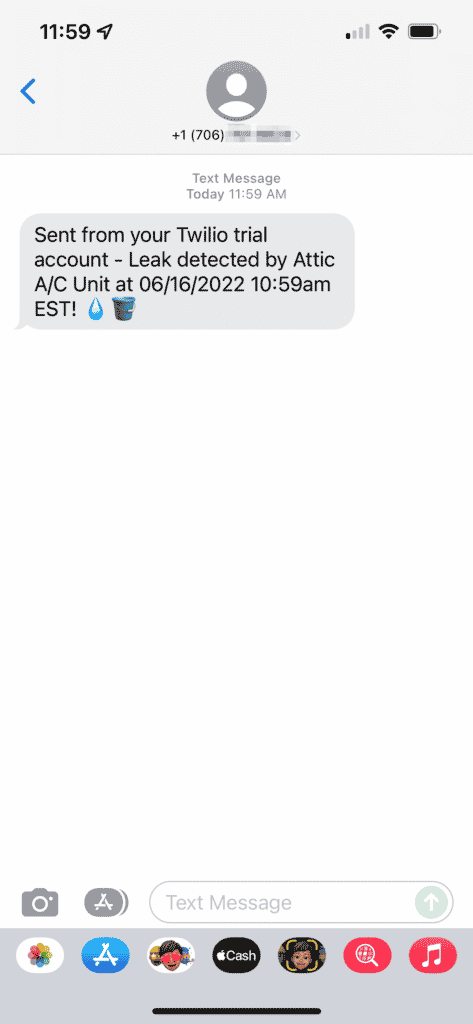In the first year of home ownership 77% of buyers faced unexpected repair costs, and over 2/3 of those surveyed paid upwards of $1,000 on repairs.
Leaks can happen any time and water can be one of the most destructive substances, especially when it’s where it shouldn’t be and you don’t know about it. Leaks can even happen when the power’s out, meaning Wi-Fi powered leak detectors are out of luck too.
In this Hackster tutorial, I’ll walk you through how to build your own cellular-enabled, low-code leak detector, with instant SMS alerts via Twilio whenever water is detected.
How it Works
We’ll take a Blues Wireless Cellular Notecard, slot it into the Blues Wireless Notecarrier-A, add an analog water sensor, and use the newly released Notecard firmware feature that allows for autonomous reporting of GPIO state changes without a host microcontroller.
A small LiPo battery powers the whole shebang, as well.

This code will tell our Notecard to watch for changes to its AUX1 pin, and if the pin’s state changes from LOW to HIGH (like when water is detected by the sensor), it will trigger an SMS alert from Twilio.
And if water is detected?

Build Your Own Leak Detector
If you’d like to make your own leak detection device, complete instructions are available here in this Hackster tutorial.
To get started, grab the following hardware:
- Cellular Notecard
- Notecarrier-a
- Songhe water sensor
- LiPo battery with JST connector (any LiPo will do)
Happy hacking! 💧 👨💻
